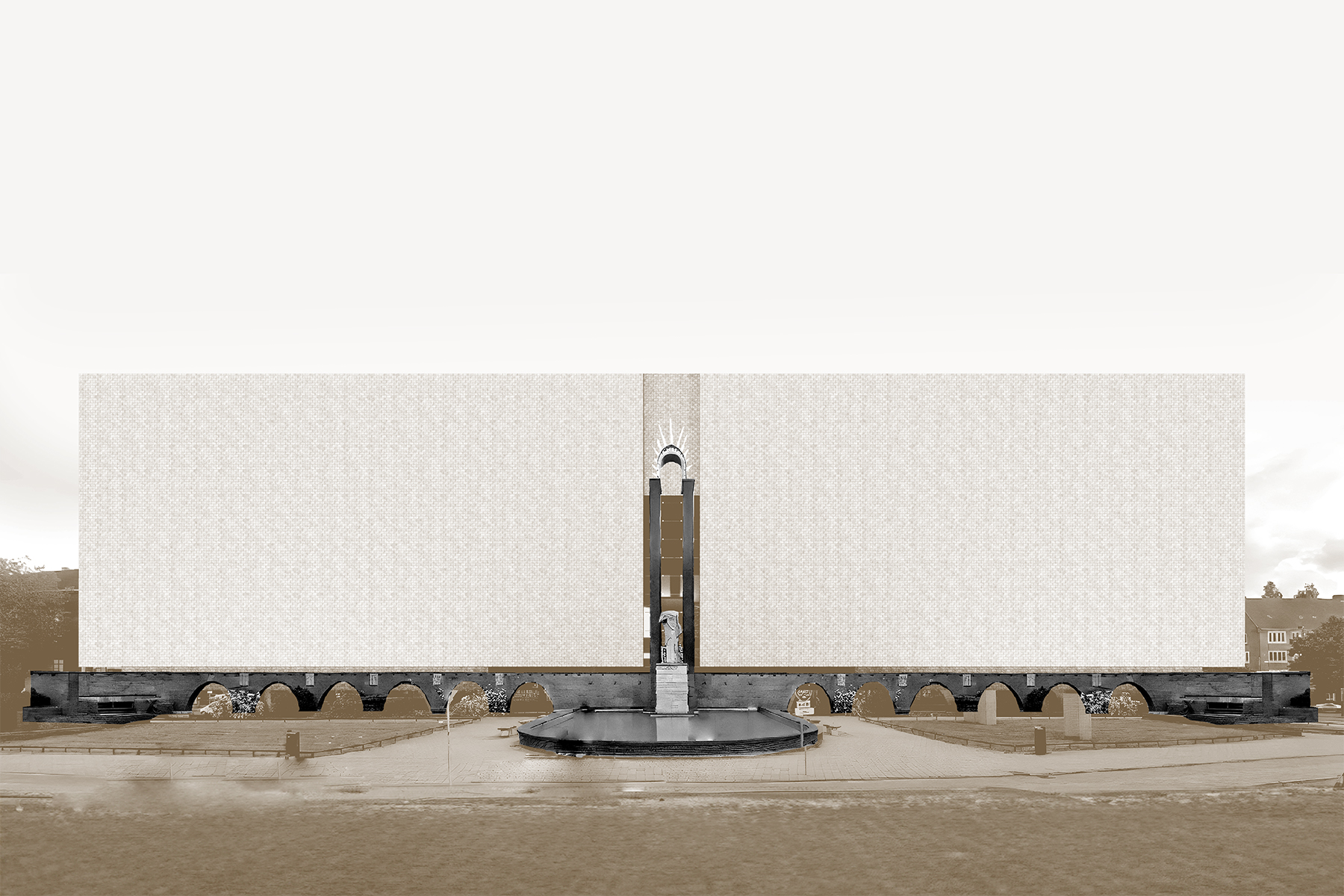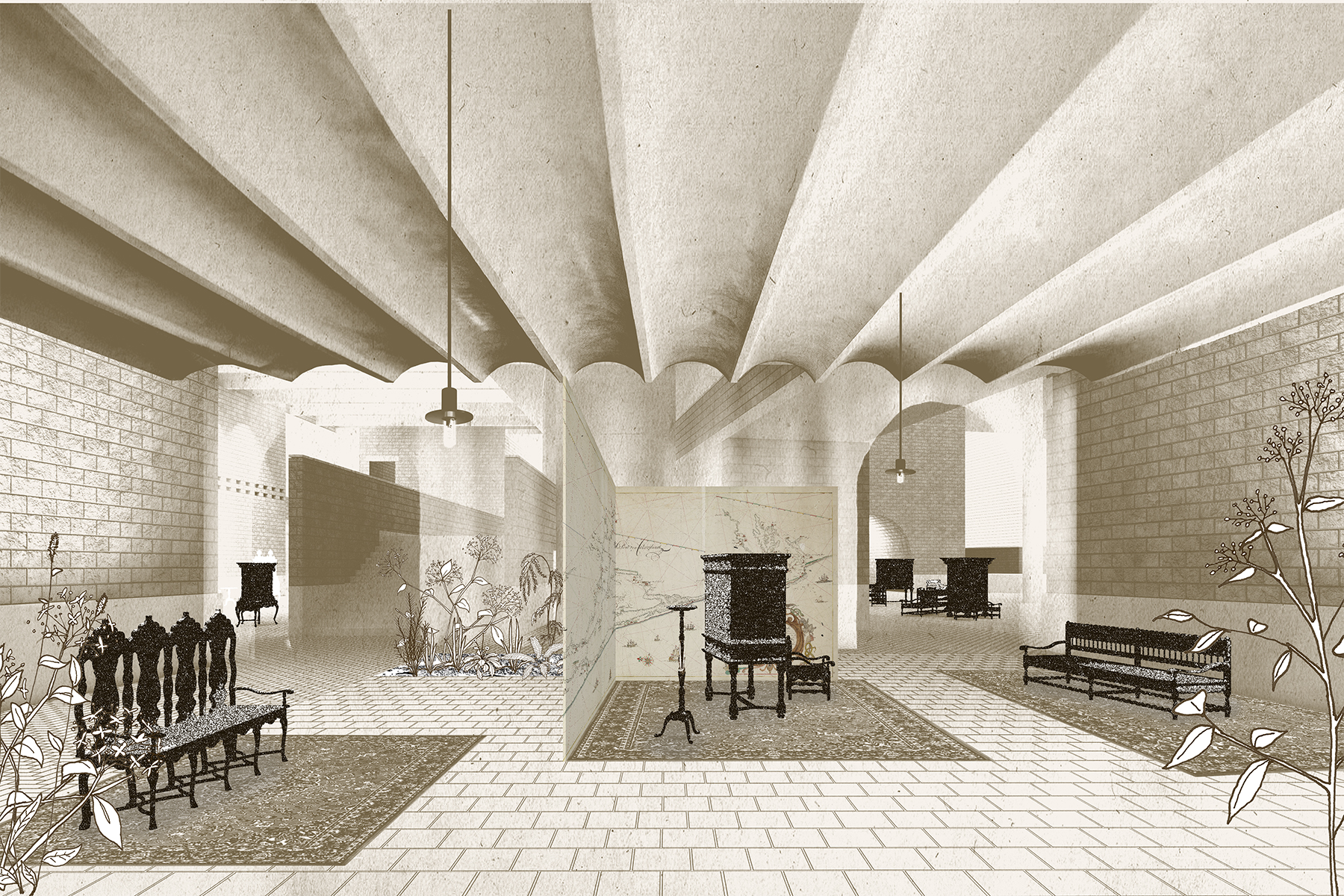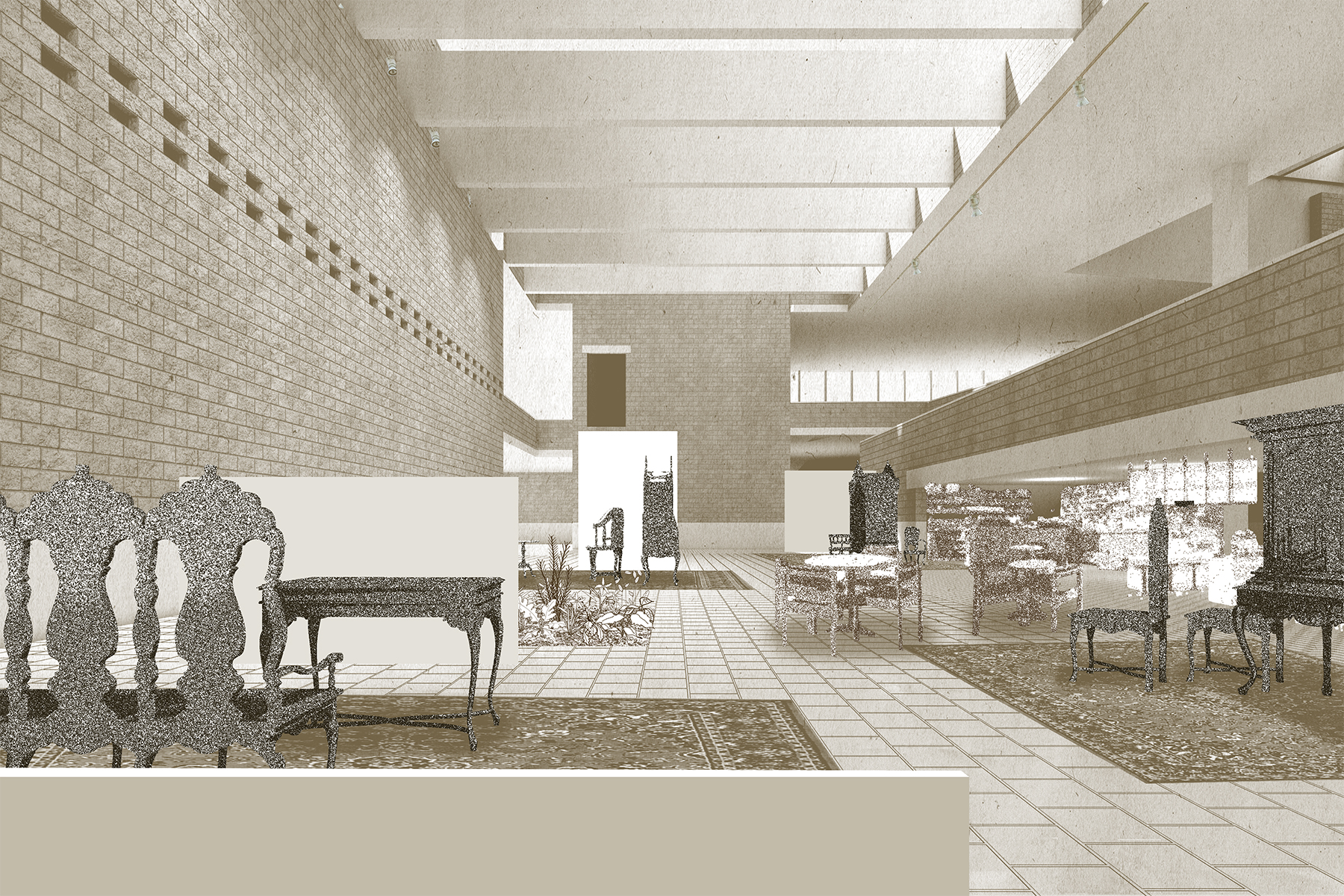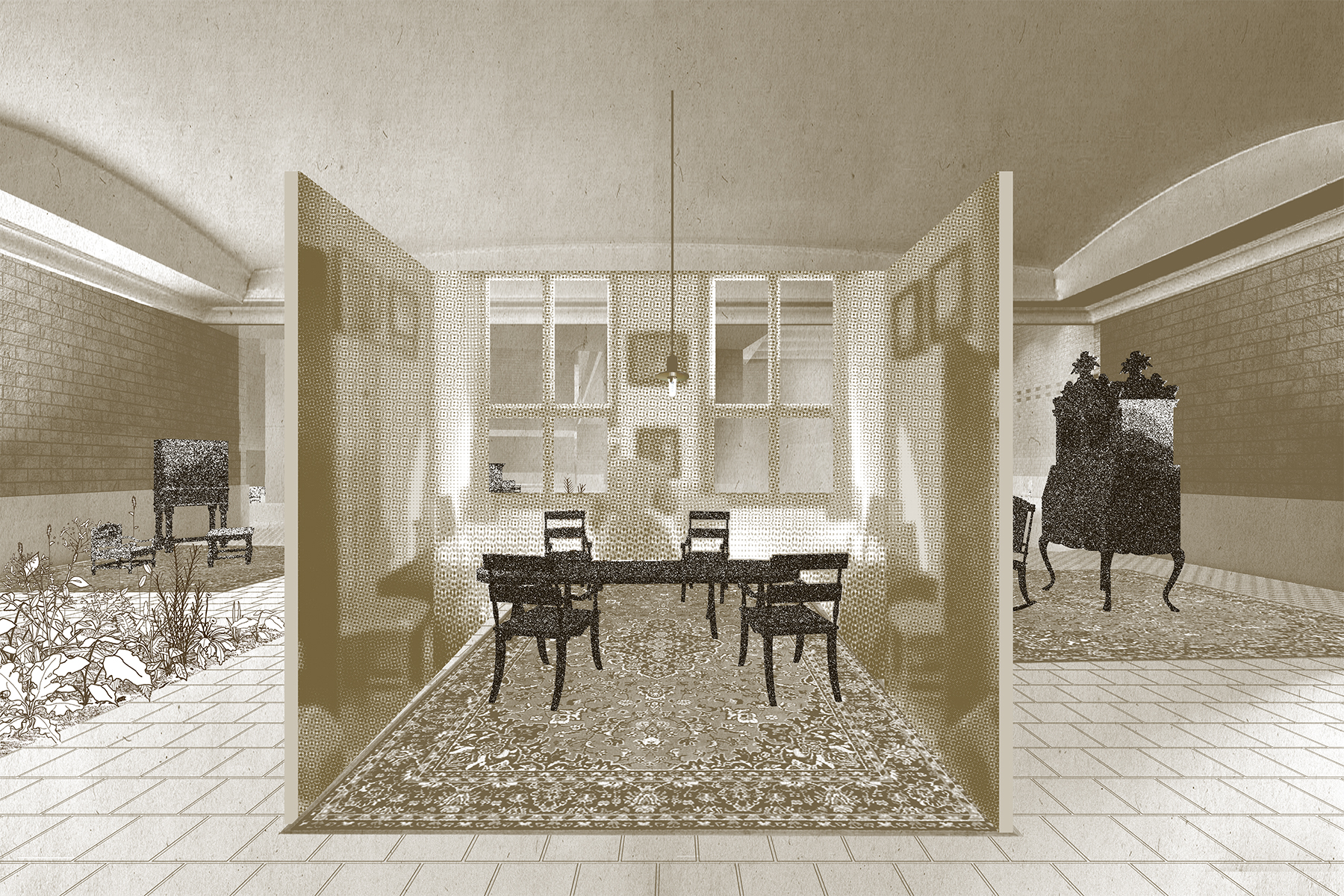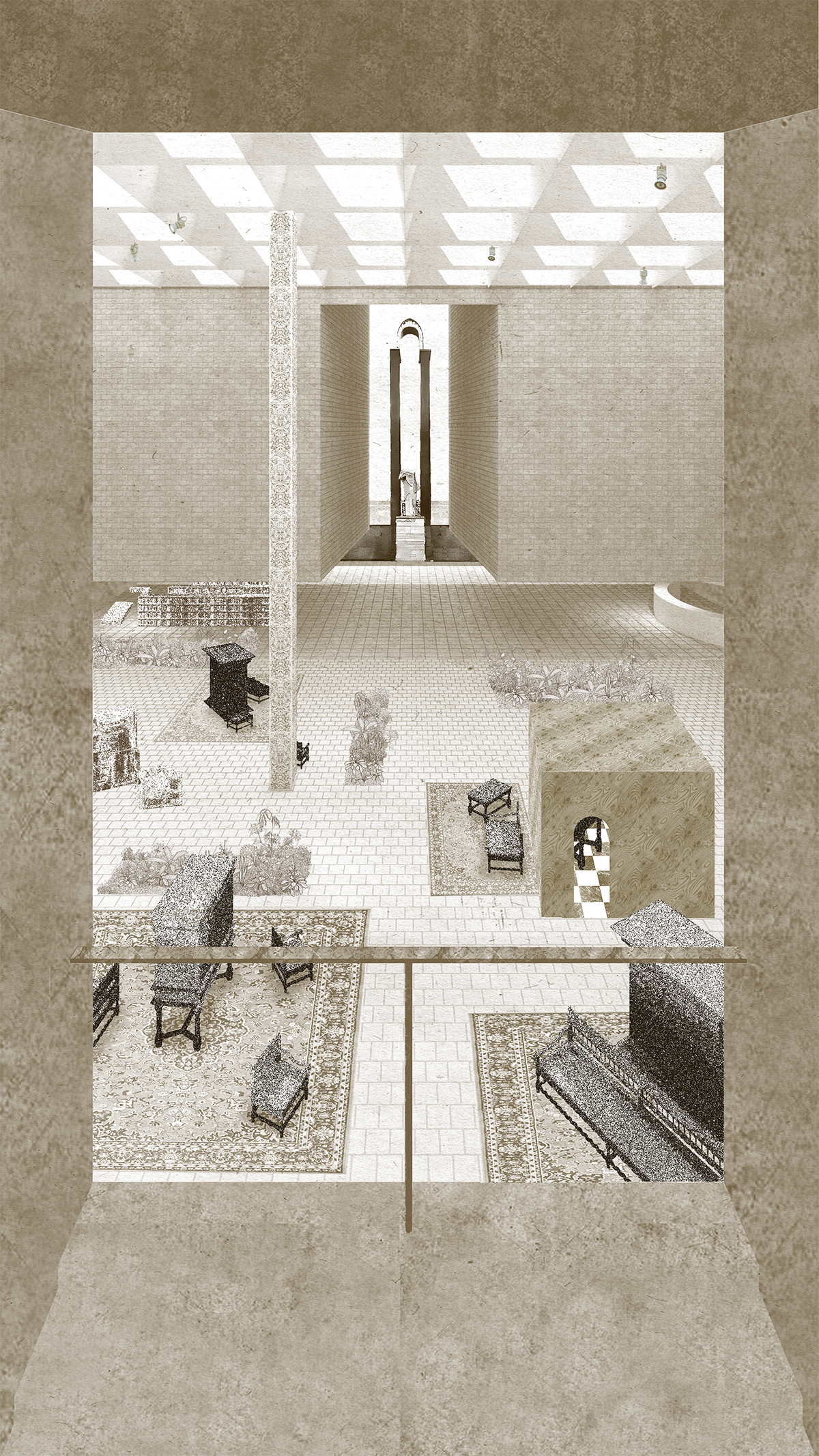Much of contemporary life is a product of colonialism.
As we eat chocolate, drink coffee, and inhale the aroma of spices, we must critique the very acts of consuming chocolate, drinking coffee, and smelling spices. Life exists too close, while the colonies feel too distant. We find ourselves torn between these two scales of proximity.
Colonialism reaches as far as the tongue. If so, how far can the boundaries of life extend?
In the inventory of collected interior decorations, their arrangement, the walls displaying them, the rooms, the museum, the block, and even other countries—one can discern a recurring sense of distance in their forms. A structure flows through these disparate spaces. The design method adopted here transitions seamlessly, from drawing to drawing, and from drawing to exhibition, preserving a shared structural quality throughout.
Netherlands - East Indies Furniture Museum serves as a site to challenge and relativize existing exotic aesthetics by manipulating distance. By varying the interplay of foreground and background through shifts in distance, it seeks to disrupt the relationship between the exotic and the beautiful with the mundane and the ordinary.
--
今日の生活の多くが、植民地主義の産物である。
私達は、チョコを食べながら、コーヒーを飲みながら、スパイスを嗅ぎながら、 チョコを食べることについて、コーヒーを飲むことについて、スパイスを嗅ぐことについて批評しなければならない。 生活はあまりにも近くにあり、植民地はあまりにも遠くにある。2つの距離の間で私達は引き裂かれている。
舌の上にまで植民地はある。ならば生活はどこまで大きく広がることができるだろうか。 収集した室内装飾品の目録、その配置、それを展示する壁面、室、博物館、街区、そして他国、 そこに同型の距離の感覚を見出す。異なる空間を貫流する構造がある。 設計では、ドローイングからドローイング、ドローイングから展示へと、 共通する構造的な質を損なわないように推移するという方法が取られた。
オランダ東インド家具博物館は、距離を運用することで、 既存のエキゾチックな美学を相対化する場である。 前景と背景の移り変わりを距離によって様々に変えることで、 エキゾチックで美的なものと、卑近で普通なものの関係を、かき乱そうとした。





